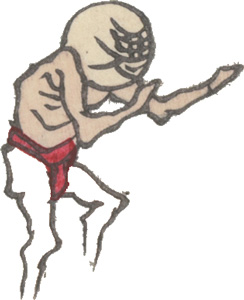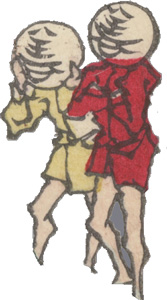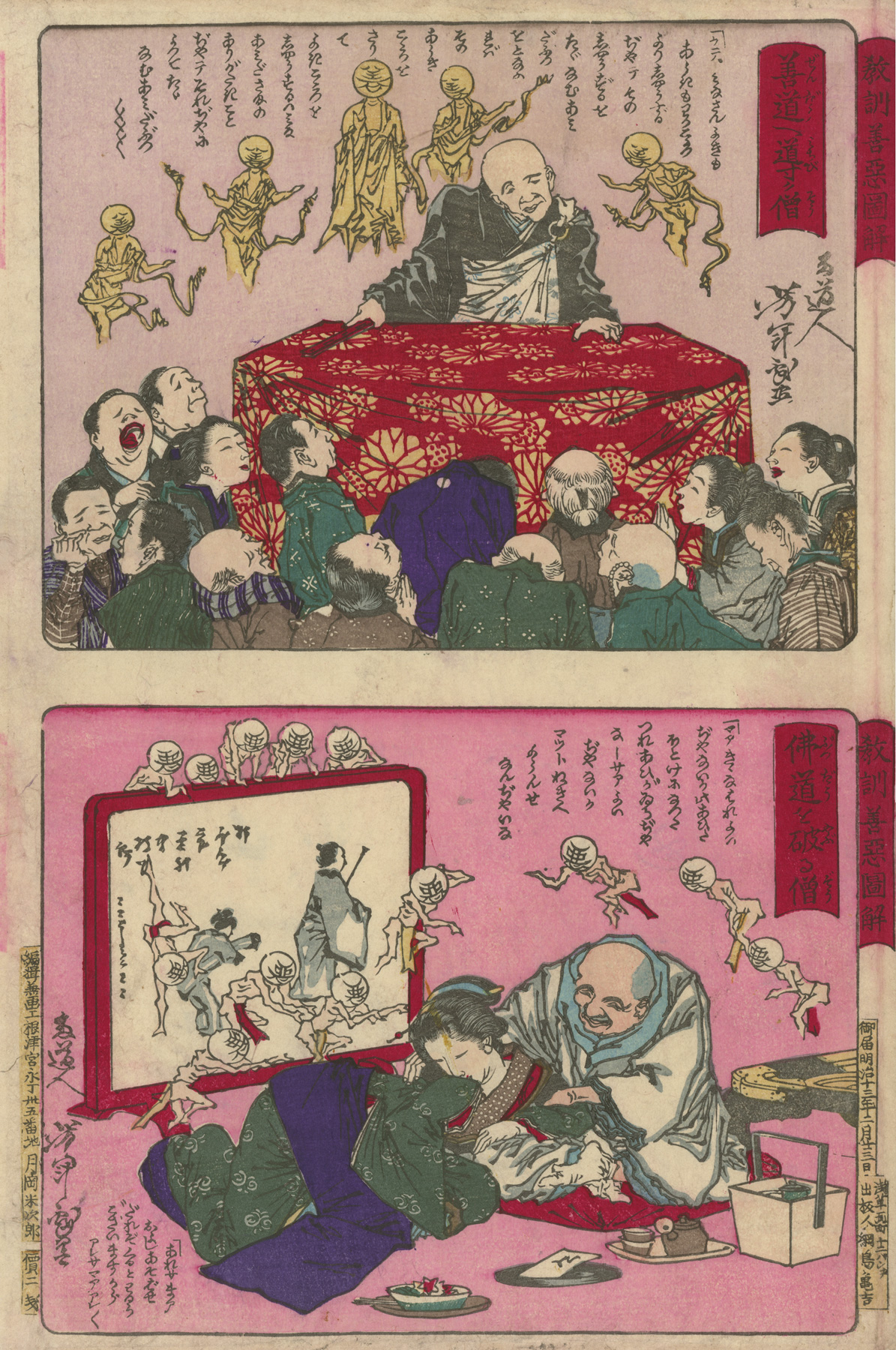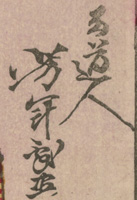About This Print
Source: Yoshitoshi.net website of J. Noel Chiappa and Jason M. Levine http://www.yoshitoshi.net/series/morallessons.html
One of twenty prints (full oban size) from the series Moral Lessons through Pictures of Good and Evil picturing a virtuous priest who guides people along the proper path and a debauched priest who destroys the Buddhist path by seducing a woman.
About The Series Moral Lessons through Pictures of Good and Evil
These lessons in morality were originally issued as twenty single oban-size sheets containing two paired chūban-size prints contrasting "good" behavior with "bad" behavior. Over time many of the full-size oban sheets have been cut into separate chūban size prints.
Little figures portraying good souls (zendama) and evil souls (akudama) populate each print. The faces of the zendama and akudama show variations of the characters 善 (good) and 悪 (evil). These figures originated with the author and printmaker Santō Kyōden in his 1790 book Shingaku hayasomegusa (“Learning of the Mind (or Heart) in Fast Dyes”) and they started commonly appearing in woodblock prints shortly thereafter. For additional information on zendama and akudama figures please see the article on this site titled Representations of Good and Evil: Origins of Zendama and Akudama Figures in Japanese Prints.Each print in the series carries the signature "ryōdōjin Yoshitoshi giga". Ryōdōjin, a person who knows both ways, suggests that the artist, perhaps like ourselves, knows both the good and evil in himself.
A Thesis on This Series
Titled Tsukioka Yoshitoshi's Series Kyōkun zen’aku zukai, written by Kiyoko Andrea Metzler, this 2017 masters thesis analyzing this print series is available for download from the University of Vienna's website at http://othes.univie.ac.at/46922/. It is in German, but the following English Abstract is provided:  Akudama 悪 Akudama 悪 |  Zendama 善 |
This master’s thesis examines the woodblock print series Kyōkun zen’aku zukai (Moral lessons of good and evil) by the ukiyo-e artist Tsukioka Yoshitoshi. Furthermore it addresses the socio-cultural, intellectual and historical backgrounds of the series. At first glance the series appears unassuming. Specialist literature tends to dismiss it as “moralizing“ and “educational“ when in reality it offers comprehensive and fascinating insights into the popular consciousness, moral perceptions as well as the daily life of the common people during the Edo and Meiji era. The series is comprised of forty separate images accompanied by texts, both depicting and explaining the predominant moral concepts of the time. The careful reading, translation and detailed analysis of the texts in combination with the images of the prints unveiled these moral concepts, which can be attributed to the “conventional morality” (tsūzoku dōtoku) taking shape during the Edo period. Until the mid-Meiji period practicing “conventional morality” in the form of virtues and values like diligence, self-discipline, honesty, abstinence, harmony, frugality and filial piety was of great significance. In fact “conventional morality” was the essence of the common folk and furthermore constituted the basis of the yonaoshi movement towards a better world and the modernization of Japan. Since the end of the 18th century natural disasters and great famines had severely affected Japan’s rural population. This led to the impoverishment of the common people and increased conflicts within society. Therefore people stood up for the “renewal of the world” by engaging in popular uprisings in which they demanded and fought for peace, justice, equality and freedom. Despite the arrival of the Meiji period conventional morality was able to maintain its status in the educational system as well as the ethical education. The Meiji period brought about countless changes, new interpretations and misappropriations of conventional morality. There were even attempts to integrate conventional morality into the ideological efforts of Japan. Moreover external factors like the forced opening of Japan and the signing of the “unequal treaties” led to an increased interest in traditional moral concepts, since it was Japan’s primary goal to gain parity with the advanced Western countries. All available resources were mobilized to overcome and remove the “lack of civilization” and backwardness alleged by the West in the shortest time possible.
Print Details
| IHL Catalog | #506 | |||
| Title | Priest on a Virtuous Path and Priest on a Debauched Path 善道へ導く僧 佛道を破る僧 | |||
| Series | Moral Lessons through Pictures of Good and Evil Kyōkun zenaku zukai 教訓善悪圖解 (教訓善悪図解) | |||
| Artist | Tsukioka Yoshitoshi (1839-1892) | |||
| Signature |
| |||
| Seal | none | |||
| Date | 1880 February 23 | |||
| Publisher |  firm name: Tsujiokaya Kamekichi [Marks: pub. ref. 549; similar to seal 26-087] | |||
| Carver | ||||
| Impression | excellent | |||
| Colors | excellent | |||
| Condition | good - full size; not backed; minor soiling and wrinkling | |||
| Genre | ukiyo-e; nishiki-e shūshindan; giga | |||
| Miscellaneous | ||||
| Format | horizontal oban (consisting of two chūban size prints) | |||
| H x W Paper | 13 7/8 x 9 1/4 in. (35.2 x 23.5 cm) | |||
| Collections This Print | Adachi City Museum 資料番号 889 | |||
| Reference Literature | Tsukioka Yoshitoshi's Series Kyōkun zen’aku zukai, Kiyoko Andrea Metzler, University of Vienna, 2017 |
3/22/2020





